Encierro De Toros San Fermin Funny
| The festival of San Fermin and the running of the bulls (el encierro) takes place in Pamplona, Navarra, every year in the second week of July. Whilst San Fermin was originally a religious festival in celebration of the patron of Navarra, Saint Fermin, the tradition of the running of the bulls has meant that this fiesta has gained international recognition and is now much more than a local religious celebration.In fact, there were over 200,000 visitors to Pamplona for the fiesta last year, bringing an income of 30 million to Pamplona. | La fiesta de San Fermin y el encierro tienen lugar en Pamplona, Navara, cada año en la segunda semana de julio. Mientras que San Fermin era originariamente una fiesta religiosa en celebración del patrono de Navarra, San Fermin, la tradición del encierro ha traído esta fiesta recognición internacional y ahora se trata de mucho más que simplemente una celebración religiosa local. De hecho, el año pasado hubo 200,000 visitantes a Pamplona durante la fiesta, que han traído ingresos de 30 millones a Pamplona. | |
| EL CHUPINAZO - THE START OF THE FESTIVAL / EL INCIO DE LA FIESTA | ||
| The festival begins on 6th July with the `chupinazo` (txupinazo in Basque), which is the firing of a rocket from the balcony of the Ayuntamiento (town hall) at 12 noon.The area surrounding the Town hall (the Plaza Consistorial) is crowded full of 12,500 revellers, who hold their red neckerchiefs in the air and shout `Viva San Fermin, Gora San Fermín!` (Long live San Fermin, in Spanish and Basque).Then begins a 7 day long party full of bull-running, music, dancing and calimocho (kalimotxo - red wine and coke). According to the Council of Pamplona, after the Chupinazo, the street cleaners collect 30,000 kg of glass from the square.And during the whole festival, 1,000 tons of rubbish are collected. | | La fiesta empieza el 6 de julio con el chupinazo (txupinazo en euskera), con el disparo de un cohete desde el balcon del Ayuntamiento a mediodía. La Plaza Consistorial delante del ayuntamiento se llena de 12.500 juerguistas, que se levantan los pañuelos rojos y gritan 'Viva San Fermin, Gora San Fermín' (la misma frase en euskera). Y aquí empieza la fiesta que dura 7 días, llena de encierros, música, bailes y calimocho (kalimotxo en euskera - una bebida de coca-cola y vino tinto). Según el municipio de Pamplona, depués del chupinazo, los barrenderos recogen 30.000kg de vidrio de la plaza. Además, durante la fiesta entera, se recoge 1.000 toneladas de basura. |
| THE RUNNING OF THE BULLS / EL ENCIERRO | ||||
| It is widely believed that the encierro originated from the difficult task of transporting the bulls from their pen to the bullring.As there were no lorries and it was not easy to control the bulls, they were simply led along the town streets to the bullring.Some risk-takers found it amusing to run in front of the bulls and there the tradition began. The joining together of the religious, commercial and bullfighting festivals and the move to July 7th led to the first official celebration of San Fermines in 1591.The first fiesta only lasted two days, but included similar features to the current day version: el encierro, music, a procession and a bullfight.The fiesta gained international acknowledgement through the American writer Ernest Hemingway`s book "The Sun Also Rises | Una opinión muy extendida en cuanto al origen del encierro es que empezó con la tarea difícil de transportar los toros del corral hasta la plaza de toros. Dado que no había camiones y que no era fácil controlar los toros, los llevaban por las calles del pueblo hasta la plaza de toros. Luego la gente buscando el riesgo se fue animando a correr delante de los toros y así comenzó la tradición. La unión de los aspectos religiosos, comerciales y el encierro y la nueva fecha de la fiesta (el 7 de julio) llevaron a la primera celebración oficial de San Fermin en 1591. La primera fiesta sólo duró dos días, pero incluyó características parecidas a la fiesta actual, o sea, el encierro, la música, una procesión y una corrida de toros. La fiesta ganó reconocimiento internacional a causa del libro del escritor americano Ernest Hemingway "The Sun Also Rises", que informó el mundo del encierro en Pamplona y así, llevó a la multitud de visitantes que acuden al pueblo cada año. | | ||
| BUY ME / CÓMPRAME | ||||
| These days, the Encierro consists of 6 fighting bulls and two herds of bullocks running an 825m course through the town centre from their corral at Santo Domingo to the Plaza de Toros (the bull ring). | | Actualmente, hay seis toros de lucha y dos manadas de novillos que corren los 825m del encierro por el centro del puebo de sus corrales a Santo Domingo hasta la plaza de toros. |
| The course is heavily protected with two barriers and there are several security and ambulance staff on hand to ensure that the bull-running runs as safely as possible. Every morning, at 8am between 7th and 14th July, thousands of adrenaline-seekers enter the encierro.It is traditional to wear all white with a red neckerchief (and sometimes a red belt); however, there is no obligation and it is common to see tourists wearing casual clothes. There is no need to register anywhere - runners simply enter the encierro by the Town Hall but should be aware of Pamplona Council's simple rules: | | Se protege el camino mucho con dos barreras de seguridad y hay siempre personal de seguridad y ambulancieros atentos para asegurar que el encierro sea lo más seguro posible. Cada mañana, a las ocho entre el 7 y el 14 de julio, miles de buscadores de adrenalina entran en el encierro. Es tradicional llevar todo blanco con un pañuelo rojo al cuello (y a veces un cinturón rojo); no obstante, no es obligatorio y se ve a menudo turistas con ropa normal. No es necesario registrarse en ninguna parte - los corredores simplemente deben entrar el encierro al lado del Ayuntamiento pero deben tomar en cuanto las reglas siguientes del municipio de Pamplona: | |||
| IT IS FORBIDDEN TO: | ES PROHIBIDO: | |
| 1. Admit anyone under the age of 18 into the course as minors are totally prohibited from running or participating. | 1. La presencia en el trayecto de menores de 18 años, con exclusión absoluta del derecho a correr o participar. | |
| 2. Go over the police barriers which the authorities have erected to ensure the safe running of the course. | 2. Desbordar las barreras policiales que los responsables consideren conveniente formar para la buena marcha de la carrera. | |
| 3. Place oneself in the zones and areas of the course which are prohibited by the agents of authority. | 3. Situarse en las zonas y lugares del itinerario que hayan sido prohibidos expresamente por los agentes de la autoridad. | |
| 4. Wait before the release of the bulls in corners, dead ends or doorways of houses or establishments located throughout the length of the course. | 4. Estar a la espera, antes de la salida de las reses, en rincones, ángulos muertos, portales de casas o establecimientos situados a lo largo del recorrido. | |
| 5. Leave open the doors of the shops or houses along the course, the owners or tenants of the said property being responsible for ensuring they are closed. | 5. Tener abiertas las puertas de comercios o los portales de las casas situados en el trayecto, siendo responsables los propietarios o inquilinos de los inmuebles. | |
| 6. Enter into the route in a state of drunkenness, under the effects of drugs or in any inappropriate state. | 6. Permanecer en el recorrido en estado de embriaguez, bajo efectos de drogas o de cualquier forma impropia. | |
| 7. Carry objects which may impede the orderly and safe running of the Bull Run (including any type of camera for photography or video purposes). | 7. Portar objetos inconvenientes para el buen orden y seguridad del encierro (lo que incluye cualquier tipo de cámara fotográfica o de vídeo). | |
| 8. Wear clothes or shoes which are not appropriate for the run. | 8. Llevar vestuario o calzado inadecuado para la carrera. | |
| 9. Call the animals or distract them in any way and for whatever reason in the course or during the rounding up in the Bull Ring. | 9. Citar a las reses o llamar su atención de cualquier forma y por cualquier motivo en el itinerario o en el ruedo de la Plaza de Toros. | |
| 10. Run towards the bulls or run after them. | 10. Correr hacia las reses o correr detrás de ellas. | |
| 11. Grab onto, harass or mistreat the animals or obstruct their exit enclosure by any action during the amateur bullfight. | 11. Agarrar, hostigar o maltratar a las reses y dificultar por cualquier acto su salida o encierro durante las capeas. | |
| 12. Stop in the Bull Run or station oneself on the walls or barriers or in the doorways in such a way as to impede the run or the defence of the runners. | 12. Pararse en el recorrido y quedarse en el vallado, barreras o portales, en forma tal que se dificulte la carrera o defensa de los corredores. | |
| 13. To take photographs from the streets, walls or barriers without due authorisation. | 13. Sacar fotografías desde las calles, vallados o barreras sin la debida autorización. | |
| 14. Install elements in the horizontal, vertical or air space of the course, without authorization from city hall. | 14. Instalar elementos que invadan el espacio horizontal, vertical o aéreo del recorrido, salvo autorización expresa de Alcaldía. | |
| 15. Any other action which may impede the normal running of the Bull Run. | 15. Cualquier otra actuación que pueda dificultar el normal desarrollo del encierro. |
| A firework goes off at 8am which signals that the pen has been opened.The atmosphere is electric with fear and adrenaline as the runners pray to San Fermin with the following prayer (asking San Fermin to guide and bless them through the encierro):`A San Fermín pedimos, por ser nuestro patrón, nos guíe en el encierro dándonos su bendición`.A second firework is then fired, which signifies that all bulls are now out of the corral. | | El desparo de un cohete a las 8 por la mañana indica que se ha abierto el corral. El ambiente se hace eléctrico con miedo y adrenalina mientras que los corredores rezan a San Fermin con la reza siguiente: "A San Fermín pedimos, por ser nuestro patrón, nos guíe en el encierro dándonos su bendición". Luego, el desparo de un segundo cohete señala que todos los toros han salido del corral. | |
| THE ROUTE / EL RECORRIDO | ||||
| When leaving the corral, they climb Santo Domingo and cross the Ayuntamiento Square continuing down c/ Mercaderes.Shortly afterwards is the most dangerous stretch of the bullrun as there is a closed curve leading into c/ Estafeta.Next comes a small section of c/ Duque de Ahumada which is known as the Telefónica stretch.The last section can also be dangerous as the route leads into a dead end street which then leads to the Bull Ring. The bull-run usually only lasts about 2 or 3 minutes, unless a bull decides to stop or turn around, which can sometimes happen.A third rocket is fired when all the bulls have entered the bull ring and the final rocket is fired when all bulls are in the pen.This signifies the end of the bullrun for that day. | Cuando salen del corral, los toros montan Santo Domingo y crucen Plaza Consistorial. Continuan por c/ Mercaderes y luego alcanzan a la parte más peligroso del recorrido porque hay un curva difícil que lleva a c/ Estafeta. Después, hay una sección pequeña de c/ Duque de Ahumada, que se llama también la sección Telefónica. La última parte puede ser peligrosa también porque lleva a un callejón sin salida antes de llegar a la Plaza de Toros. El recorrido sólo dura normalmente 2 o 3 minutos, a menos que un toro decide de parar o voltearse, lo que puede pasar a veces. Se dispara un tercer cohete cuando todos los toros han entrado en la plaza de toros y luego el último cohete cuando todos los toros son en el corral. Este último cohete significa el fin del encierro por aquel día. | View Pamplona bull run in a larger map | ||
| IS IT DANGEROUS? / ¿ES PELIGROSO? | ||||||||||
| Since 1900, there have been 15 deaths and 200 seriously injured by bulls` horns.There is rarely an injury-free encierro, although the majority of injuries are actually caused by the runners` themselves, running into each other or tripping. | Desde 1900, han habido 15 muertos y 200 gravamente heridos por los cuernos de los toros. Es raro tener un encierro sin heridas, aunque es verdad que los corredores sí mismos causen la mayoría de las heridas, chocándose contra otros corredores o tropezando. |
| ||||||||
| | ||||||||||
| WATCHING / VER EL ENCIERRO | ||
| Wherever you decide to watch the bullrun, you need to get there early.If you can get there for between 6am and 6.30am you should get a fairly decent position where you will at least see the bulls go past.Remember that a lot of people have not actually gone to bed from the night before`s party (especially on the day of the Chupinazo - 6th), so there are a surprising amount of people in Pamplona at 6am!In front of the museum on c/ Santo Domingo is a great place because you can watch the bulls for a long stretch, running up the hill.Also, on Plaza Consistorial (outside the town hall) a fairly large corner of the route is covered and near the Plaza de Toros. | | Dondequiera que se decida de ver el encierro, se debe llegar temprano. Si se puede llegar entre las seis y las seis y media por la mañana, se debería obtener un buen sitio donde se verá por lo menos los toros que pasan. Recuerdáse que mucha gente todavía no se ha acostado después de la fiesta anoche (sobretodo el día del chupinazo, el 6 de julio), y por eso, ¡hay un nombre sorprendente de personas en Pamplona a las seis de la mañana! Delante del museo en c/ Santo Domingo es un buen lugar porque se ve los toros por una sección larga del recorrido, mientrás que montan la calle. Además, en Plaza Consistorial (delante del ayuntamiento), se puede ver una parte grande del recorrido y cerca de la Plaza de Toros. |
| Obviously, the higher up you can get, the more of the route you`ll see, so it is great if you can get on a balcony in one of the buildings overlooking the route.You will probably have to pay but it will be worth it.Some useful websites to book balconies are: Pamplona balconies and Sanfermin.com | Obviamente, lo más alto que se pone, más del recorrido se verá y así sería fantástico si se puede obtener un sitio sobre un balcón en un establecimiento con vista al recorrido. Es probable que se tendría que pagar pero valdrá la pena. Algunos sitios utiles para reservar un sitio sobre un balcón son: Pamplona balconies y Sanfermin.com |
| Nevertheless, wherever you watch it, you will only see a few seconds of the route, therefore my advice would always be to watch the full bullrun later on TV, in a bar or your hotel. Canal 6 Navarra is a fantastic channel which lives and breathes San Fermin during the festival, showing the most recent bullrun and giving constant updates regarding the current activities, their times and locations. | No obstante, dondequiera que se lo ve, sólo se verá unos segundos del encierro, y por lo consiguiente, a mi ver, se debe ver el encierro entero más tarde por la télé, en un bar o en su hotel. Canal 6 Navarra es un canal fantástico que pone sólo San Fermin todos los días durante la fiesta, mostrando los encierros más recientes y dando las últimas novedades sobre actividades actuales, la hora de las cuales y la ubicación. |
| BULLFIGHTS / CORRIDAS DE TORO | |||
| Bullfights are held every afternoon at 6.30 pm. Tickets for the bullfights are sold out in advance because the arena only holds 12,500 people and 90% of the bullring is reserved for season ticket holders who renew their tickets each year. To book in advance, click here and follow the instructions. However, tickets do go on sale for the next evening's event at the 'taquillas' (ticket offices) at the bull ring, open from 10 am to 1 pm and after each bullfight. As always, although illegal, ticket touts can be found around the Plaza de Toros, but be careful because you will pay more and they may be fake. | Las corridas de toro tienen lugar cada tarde a las 18h30. Se vende por adelantado los billetes por las corridas de toro porque la arena cabe sólo 12.500 personas y el 90% de la plaza de toros es reservado por las personas en posesión de un abono. Para reservar por adelantado, haz clic aquí y seguir las instrucciones. No obstante, se vende billetes por la corrida de la próxima noche en las taquillas a la plaza de toros, que abren hasta 10h00 a 13h00 y depués de cada corrida de toros. Como siempre, aunque ilegal, se puede encontrar revendedores a la plaza de toros, pero cuidáse, porque se tendría que pagar más y es posible que sean falsos. | | |
| WHERE TO STAY / ALOJAMIENTO | ||
| Hotels in Pamplona town centre are booked up quickly, so if you are planning to attend San Fermin, think about booking your hotel 12 months in advance.Click to view hotels in Pamplona. If you are travelling by car to Pamplona, it is advisable to stay outside of the smelly and loud town centre. As Pamplona is located in the middle of Navarre, in the Cuenca de Pamplona, it is surrounded by mountains. Five minutes out of the town centre takes you to some fantastic scenery and some beautiful little villages. We stayed at Irurtzun, Hotel Husa Plazaola, C/ Aralar, 8, 31860 Irurtzun, Navarra. Alternatively, for the low budget trip to San Fermin, many tourists stay out all night (i.e. no need for accommodation!) or take tents and pitch them on a spot of green land. | | Los hoteles en el centro de Pamplona están todos completos muy rápidamente, y por eso, si le gustaría ir a San Fermin, piensa en reservar su hotel 12 meses por adelantado. Haz clic aquí para ver hoteles en Pamplona. Si se va a Pamplona en coche, le aconsejaría de alojarse fuera del centro que puede ser oloroso y ruidoso. Dado que Pamplona está situada en el centro de Navarra en la Cuena de Pamplona, está rodeada por montañas. Cinco minutos fuera del centro, se ve paisaje fantástico y aldeas muy bonitas. Nos alojamos en Irurtzun, Hotel Husa Plazaola, C/ Aralar, 8, 31860 Irurtzun, Navarra. Por otra parte, si se busca una visita a San Fermin menos caro, muchos turistas van a fiestas toda la noche (o sea, ¡no se necesita alojamiento!) o traen tiendas que montan en cualquier lugar verde. |
| | ||
| KUKUXUMUSU | ||||
| You will not be able to attend San Fermin without becoming aware of the presence of Kukuxumusu. Kukuxumusu is basque for 'kiss of the flea' and is a business that started during the San Fermin of 1989. They designed comical t-shirts to sell on the streets on the days of the fiesta and their success has snow-balled. To the right you can see one of their stalls selling San Fermin items (neckerchiefs, belts, cups, t-shirts, etc). They also have several shops in Pamplona town centre selling merchandise. Kukuxumusu has become as much a part of San Fermin as the bull-running itself, and even host the unofficial San Fermin website. Click on the following links to see: their San Fermin merchandise. | No es posible ir a San Fermin sin tener en cuenta la presencia de Kukuxumusu. Kukuxumusu es euskera por 'el beso de la pulga' y es un comercio que empezó durante San Fermin en 1989. Diseñaron camisetas a vender en las calles los días de fiesta y su éxito simplemente continúa aumentando. A la derecha se puede ver uno de sus tenderetes que vende artículos de San Fermin (pañuelos, cinturones, tazas, camisetas, etc). Además, hay varias tiendas en el centro de Pamplona que venden su mercancía. Kukuxumusu ha llegado a ser una parte tan importante de San Fermin que el encierro sí mismo y aún son los creadores de la página web no oficial de San Fermin. Ver su mercancía San Fermin y. | | | |
| | ||||
| SAN FERMIN JIGSAW / ROMPECABEZAS |
| FUN SPANISH | LANGUAGE RESOURCES | SPANISH CULTURE | VISIT SPAIN | SPANISH AMERICA |
| Spanish Crosswords Join F-L-S on FACEBOOK; TWITTER; BLOG; CONTACT US; SHARE LINKS | Conectores Textuales Free Spanish resources Spanish English Names Imperfect vs Preterite Most Useful Spanish words and phrases Por vs Para Ser vs Estar Spanish Courses Spanish Dictionary Spanish Grammar and Language Spanish Lesson of the Week Spanish Media Links Spanish Links Spanish Oral Exam Linking Phrases Spanish Pronouns Spanish Questions Spanish Speaking situations Spanish Subjunctive Spanish Verbs | Spanish Artists Picasso Miro Spanish Cocktails Spanish Fiestas - Día de San Valentín (Valentine's) - El Colacho (Baby jumping) - Las Fallas (Festival of fire) - La Tomatina (Tomato fight) - San Fermin (Running of the bulls) Semana Santa (Holy Week-Easter) Spanish Food Pancake Recipe Spanish Music Spanish Tapas Spanish Wine Top Spanish Beaches Top Spanish Golf Top Spanish Resorts Top Spanish Restaurants Top Spanish Sports | Alicante | Mexico City Mexico Places Mexican Posadas Food of Mexico Colombia Spanish USA Spanish California Argentina Buenos Aires Iguazu Falls Peru Machu Picchu Venezuela Santiago Chile Concha Y Toro wines Ecuador Galapagos Guatemala Paraguay Cuba Costa Rica Dominican Republic Bolivia Honduras El Salvador |
Copyright © and TM 2007-2022 fun-learning-spanish.com
Source: https://www.fun-learning-spanish.com/sanfermin.html
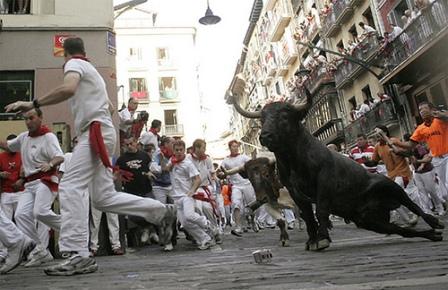
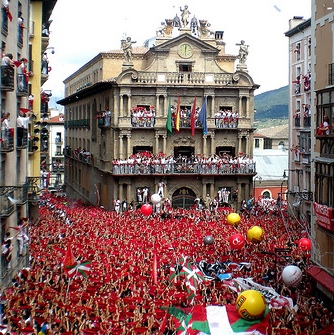
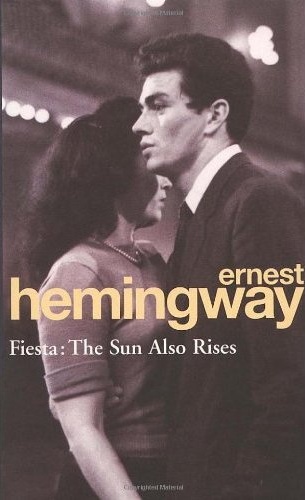
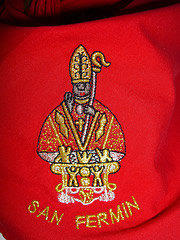
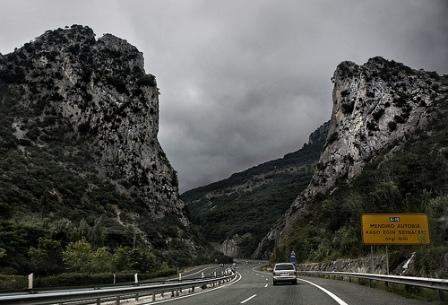
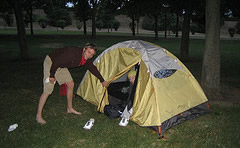
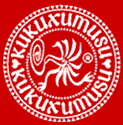
0 Response to "Encierro De Toros San Fermin Funny"
Publicar un comentario